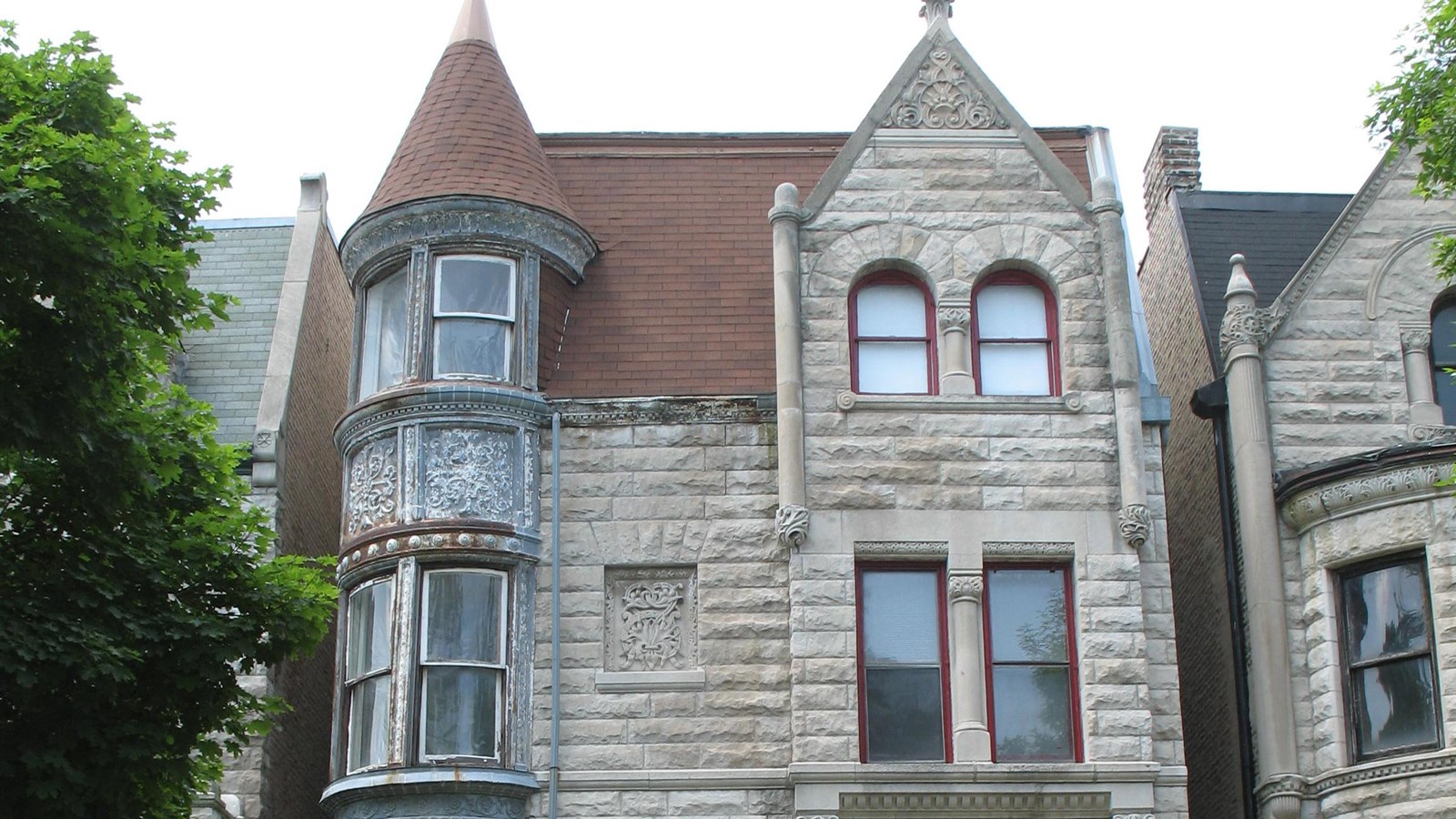Last updated: April 25, 2020
Place
Illinois: Ida B. Wells-Barnett House Chicago

Photo by TonyTheTiger, CC BY-SA 3.0, https://commons.wikimedia.org/w/index.php?curid=
Ida Bell Wells-Barnett lived in Chicago in this late-19th-century Romanesque Revival style stone residence while fighting to end lynching, segregation and the economic oppression of African Americans. She and her husband bought the building in 1919 and lived there until 1929.
In 1884, when 22 and a teacher in Tennessee, Wells-Barnett ignored a train conductor's order directing her to sit in a segregated car. Forcibly removed, Wells-Barnett filed a successful lawsuit against the railroad company. The Tennessee Supreme Court, however, reversed the lower court's decision in 1887. Racism also contributed to the poor conditions of Memphis' black schools, which Wells-Barnett openly criticized. School board disapproval resulted in her termination in 1891, after which she turned to journalism full-time.
As editor and co-owner of the Memphis Free Speech and Headlight, Wells-Barnett championed African American rights, especially after whites lynched three black Memphis grocers in 1892. Whites used lynching "to get rid of Negroes who were acquiring wealth and property," Wells-Barnett concluded, "and thus keep the race terrorized..." By documenting lynchings across the country, she raised awareness and challenged alleged white "superiority." White Tennesseans angered by her indictments, destroyed the Free Speech offices. Undaunted, Wells-Barnett carried her crusade north and published Southern Horrors: Lynch Law in All Its Phases.
Despite Wells-Barnett's efforts, Congress never passed anti-lynching legislation. Still, her advocacy made a larger black women's movement possible. She and Mary Church Terrell were the only two black women who signed a petition leading to the formation of the National Association for the Advancement of Colored People. After settling in Chicago, Wells-Barnett founded the Negro Fellowship League for black men, the first kindergarten for black children, and, in 1913, the first suffrage club for black women. Wells-Barnett successfully integrated the U.S. suffrage movement when she refused to walk with the other black women at the rear of a 1913 Washington parade and instead infiltrated the ranks of her white Illinois "peers" after the march began. Two years later, Wells-Barnett helped elect Oscar Stanton De Priest, Chicago's first African American alderman. Her "crusade for justice" continued until her death in 1931. The Ida B. Wells-Barnett House is a National Historic Landmark.
Visit the National Park Service We Shall Overcome travel itinerary to learn more about the civil rights movement themes and histories. Also, be sure to check out Civil Rights subject site.
